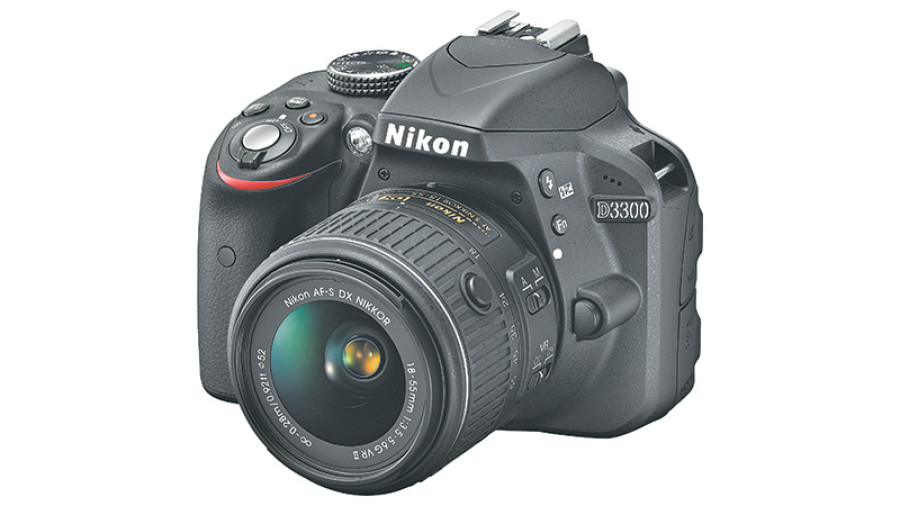Entertainment
Top entry-level cameras
A few years ago, traditional cameras (DSLRs and mirrorless) were quite popular in Nepal. A lot of people from different age groups could be seen with a DSLR camera. However, there was one thing that these gadgets didn’t offer—portability.
Anuj Bhandari
A few years ago, traditional cameras (DSLRs and mirrorless) were quite popular in Nepal. A lot of people from different age groups could be seen with a DSLR camera. However, there was one thing that these gadgets didn’t offer—portability. These days, smartphones outnumber traditional cameras due to their point
and shoot feature and immense portability. Smartphone cameras are getting better by the day, some even come with adjustable apertures that make the cameras more versatile. However, there are still features the mobile phone cameras lack, namely manual control. That’s where traditional cameras still have an edge over the average smartphone camera. Unlike a decade ago, cameras can be bought at an affordable price nowadays, especially in the entry-level price segment where
the competition has gotten fiercer than ever. With this in mind, I have prepared a list of the best entry-level cameras (both DSLRs and mirrorless) currently available in the market.
Nikon D3300
It has been a few years since Nikon launched the D3300 at the CES (Consumer Electronics Show). While it doesn’t offer extra features like a movable LCD display or a touch-sensitive display, the D3300 is a popular member of Nikon’s line-up having garnered extensive praise for being a ‘trustworthy’ entry-level camera.
The Nikon D3300 has a 24.2-megapixel APS-C CMOS sensor with a 12-bit resolution. It provides a higher image resolution compared to its competitors (maximum 6016 x 4000 pixels). The device has a one-cross type focus mechanism with 11 point Autofocus. The D3300 is capable of continuous shooting up to 5 fps (frames per second). The camera has an advantage over some of its competitors as it lets you record full HD videos at 60 frames-per-second.
The D3300 doesn’t really care much for the touch-display trend. The 3.0-inch display that sits on the rear side lacks touch sensitivity and is simply glued on to its back.
Under bright light, the DSLR leaves no room for complaints as it captures pictures well worth its price. However, the D3300 does not perform well under minimal lighting. There are instances where it completely fails to focus on an object. Furthermore, there is a lot of noise in terms of images taken under minimal lighting. Now, I know the noise can be reduced with the noise reduction feature, but this amounts to losing some sharpness in the process.
The camera lacks an inbuilt Wi-Fi connection. However, it is among the few entry-level DSLRs with an impressive battery life. Also according to the company, the D3300 can capture up to 700 shots when fully charged.
Sony A6000
The Sony A6000 is among the cheaper cameras currently available in Nepal. The A6000 is one of the numerous mirrorless cameras produced by Sony. Although critics have argued that the camera lacks a proper standout feature, the device has an updated processor, an upgraded resolution, and an improved Hybrid Autofocus feature.

The Sony A6000 has a 24.3-megapixel APS-C CMOS sensor that is capable of shooting continuously at the rate of 11 fps giving it an edge over most of its competitors. This camera offers a max resolution of 6000x4000 pixels at 3:2 ratio.
The autofocus feature of the A6000 is probably the best among entry-level cameras with a 179-point hybrid system. There is no lag, and the focus is fast—really fast. This focus performs well in low-light settings as well. Unlike the D3300, the noise
level reduction is done quite nicely in the A6000. There is sharpness in the images even under low-light settings with good colour reproduction and saturation.
For the videographers, the A6000 shoots 1080p videos at 60 frames-per-second. As for the display, Sony has included a 3-inch TFT LCD display on the device which can tilt if needed.
The Sony A6000 has a unique design with great portability and there aren’t that many areas where a user can complain in terms of its usage. However, as per the critics, the A6000 remains a mediocre camera as there just isn’t a standout feature on it.
Canon EOS 750D
The Canon EOS 750D is an affordable device that is meant for someone who doesn’t care much for the manual photography feature in their camera. With the 750D, Canon has opted for simplicity and ease of use. Mind you, I am not saying that it does not have any manual control because it certainly does.

The Canon EOS 750 is the successor to the 700D and both look a lot alike. The device holds a 3.0-inch LCD touchscreen display which offers a movable screen.
The 750D houses a 24.2 megapixel APS-C CMOS sensor and a total of 19 Autofocus points. There has been much hype regarding the focus process of the device and rightly so. The 750D has a fast Autofocus feature and is quite similar to the 70D if you try to toggle it from the viewfinder. Even the tracking is good, that is if your object isn’t moving too much. In the video department, the 750D can shoot
videos in full HD resolution.
In terms of picture quality, the 750 captures decent details. However, with an anti-aliasing filter in place, there is a bit of image softening here and there. The Anti-aliasing filter is added into DSLRs for the removal of the odd strips of noise in images.
One of the areas where the 750D suffers is dynamic range. All in all, the Canon 750D is capable of capturing images with a maximum resolution of 5184 x 3456 pixels.
While the Nikon D3300 suffers in terms of connectivity options, the Canon EOS 750D packs in a few key features, namely the Near Field Communication (NFC) and Wi-Fi. This lets users remotely use their camera from their smartphone for control and image sharing purposes.




 11.12°C Kathmandu
11.12°C Kathmandu










